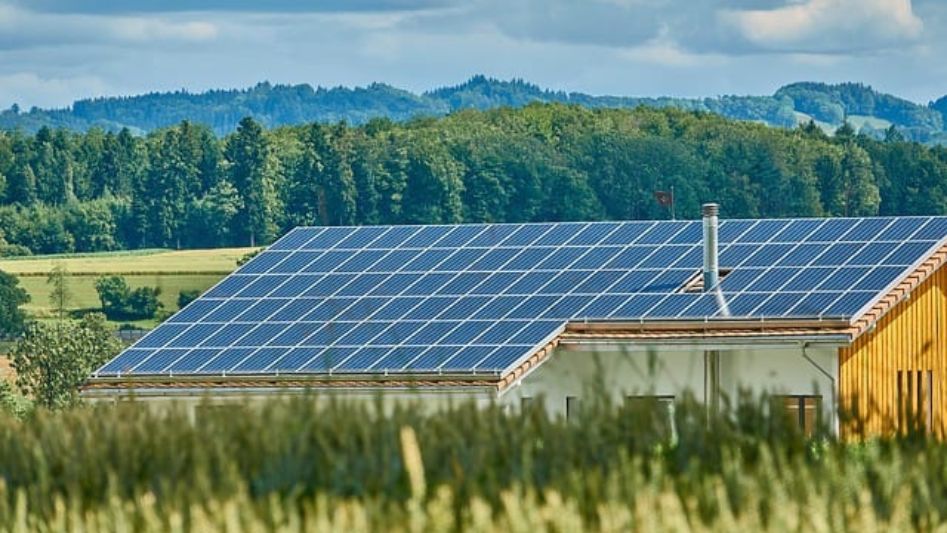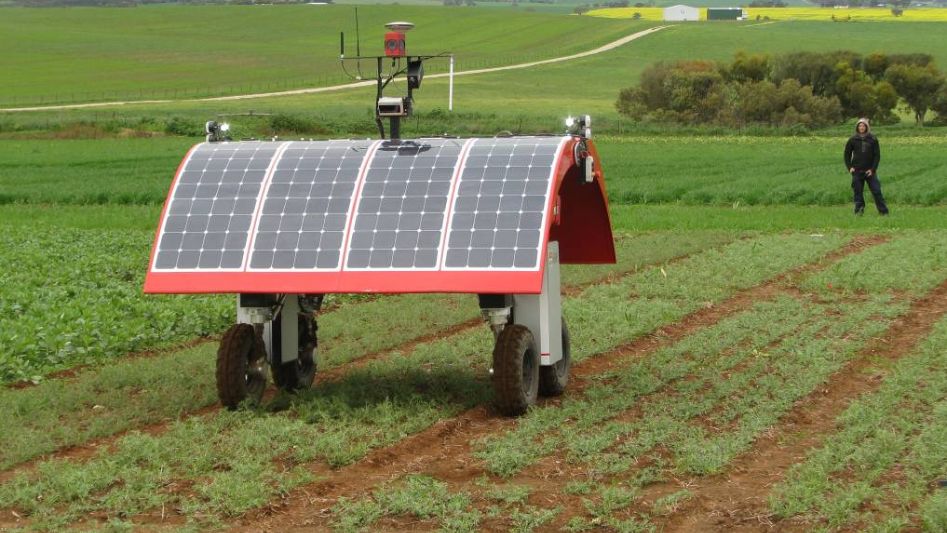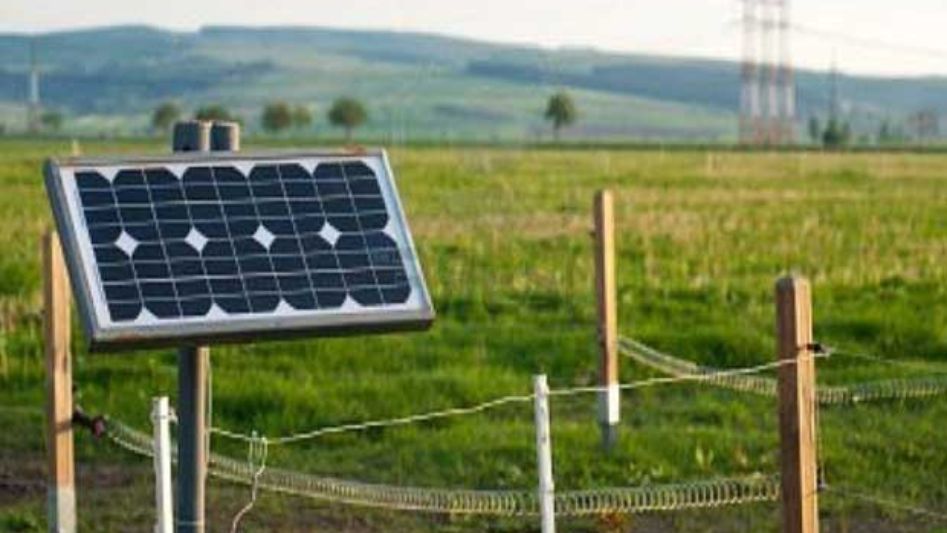Solar panels can be a mighty power source for farms, since they can generate energy even when the sun isn’t out. This article explores the challenges of using them.
Table Of Content
We have a global population that is projected to increase by 1.2 billion people in the next 15 years; rising demand for meat, eggs, and dairy; increased power use; and dwindling supplies of fresh water for agriculture. Exactly how are we meant to respond to all of that? I’ll take anything that combines my two greatest passions, food and technology, as a yes, please. I’ve been told that I have an abundance of both. But may it be possible to solve all of these issues by combining solar panels with farming? Let’s investigate the possibility of using electricity to energize our agricultural endeavors in further detail. in a figurative sense only, of course… Sorry, I forgot… Let’s take a deeper dive into the advantages and problems of using solar energy on our farmland.

Solar panels have the disadvantage of requiring a large area in order to produce a significant quantity of power. Agrivoltaics, sometimes known as APV, is a method of producing both food and power by farming in the shade of solar panels. and there are some fascinating recent instances that make a strong argument for it; nevertheless, it is important to first understand the difficulties inherent in solar parks and the solutions that have been devised to address them.
For over two decades, solar parks have been operating in rural locations. The ground underneath this sort of solar project is unusable because current agricultural equipment cannot fit through the narrow gaps between the rows of panels.
Small animals, such as chickens, geese, sheep, and bees, may share a standard solar park, turning it into a multipurpose space.
Animals like this help solar farms because they eat pests and other plants that may damage panels and cut costs without posing a threat to the panels themselves. Animals of a larger size, such as pigs, goats, horses, or cattle, do not fall under this category. The fact that cattle despise solar panels is well known.
More room may be made for farming between the solar panel rows if this need arises. It is still necessary to keep up the area under the panels, however. Since some of the land is used for solar energy and some for crops, we call this “alternating land use” rather than “dual land use.” By planting in rows, you modify the features of the soil and the sorts of crops that may be cultivated since the space between the rows is shaded for part of the day.
What if, instead, we began to install solar panels on the walls? In that range, we begin to see some novel alternatives to the conventional solar farms that sit on the ground.
More farmland may be used with the help of bifacial modules that are positioned vertically. Additionally, bifacial solar panels may absorb sunlight from both sides of the panel, which may be news to you if you are unfamiliar with them. These buildings may help protect land and crops from wind erosion by reducing wind speeds, making them ideal for use in high-risk locations. Since there are no moving components, the bifacial panels may produce more energy per square meter than conventional single-faced panels.
Panels may also be mounted on stilts, allowing for the passage of agricultural equipment beneath.
A little amount of cultivable area is lost due to the need to keep a distance between rows in order to safeguard the stilts from the equipment in this layout. The average margin of error is 3–12%. There are other permutations on this issue that are the subject of ongoing study. Panels may be installed using actuators instead of being permanently fastened in place, allowing for optimal solar energy collection and plant development via panel tilt. When it comes to the early development of some crops, this may be crucial.
But what about growing plants UNDER the raised panels?
Having solar panels block the sun may seem like a terrible thing for plants, but the process of photosynthesis actually makes it more intriguing. Plants need carbon dioxide and sunshine to gain weight. The plants seem to be sprouting out of thin air. But unfortunately, not all of the sun’s rays can be turned into usable biomass. When the amount of light reaches a specific level, known as the “light saturation point,” plants are no longer able to take in any more energy and must instead release the surplus via transpiration.
A simplification would be to classify the plants as either “I’ll have my light supersized” or “may I have my light off the kids menu?” Because solar panels naturally block some of the available sunshine, the so-called shade plants are especially helpful in tandem with them.
Sun-loving plants have recently been given the obnoxious label of “shade-intolerant” plants. Since these plants only need more light than shade plants and may actually be damaged by too much light, the term “sunloving” is a little misleading. Like myself, plants may experience “sunburn” and heat stress when their tolerance levels are exceeded, leading to increased water loss via evaporation.

Nearly all crops may be grown using solar panels, while some production loss may occur for sun-loving plants during the less bright seasons, according to a paper from the German Fraunhofer Institute for Solar Energy. During the RESOLA project that ran from 2016 to 2018, researchers in the German region around Lake Constance (or Bodensee, as the Germans call it) showed that APV-crop yields were 25% lower than the non-solar reference field during a relatively “wet and cold” year in 2016, but that they were higher during “dry and hot” years like 2017 and 2018. This suggests that APV has the potential to significantly alter the status quo in very dry and warm climates.
There hasn’t been a lot of time spent on agrivoltaics yet, and the biggest triumphs have been with shade-tolerant crops like lettuce, spinach, potatoes, and tomatoes.
Now let’s look at some of the most encouraging case studies for agri-photovoltaics.
All right, let’s go to the Netherlands now. Despite its small size, it is the world’s second-largest exporter of food.
The BayWa group, with headquarters in Munich, Germany, has launched various experimental initiatives with local fruit producers under the “GroenLeven” brand. In the little town of Babberich, in the Dutch province of Utrecht, close to the German border, they have their biggest location, a vast raspberry farm covering 4 hectares (10 acres). An agrivoltaic farm with a capacity of 2 MW has been established over an area of 3 hectares. Traditional agricultural methods were maintained for the remaining portion. Because of their delicate nature and their preference for the shade, raspberries are often cultivated in plastic-covered rows.
In this initiative, solar panels are installed in alternate rows facing east and west, and raspberry plants are cultivated immediately beneath the panels. This not only increases solar productivity but also shields the plants from the prevailing winds. Traditional solar panels were tried out for this project, but they blocked out too much of the sunshine, so they moved to panels with greater gaps between the solar cells. Fruit yielded beneath the panels was comparable to, if not higher than, that yielded in conventional plastic tunnels.
The plastic tunnels were readily broken by hail and summer storms, so the farmer saved a lot of time by not having to maintain them. Although the damaged fruit may no longer be marketable, it must still be collected. The fruits protected by the panels during the recent summer’s storms fared better than those in the reference field.
The temperature beneath the solar panels was also much lower in the argrivolatic test field compared to the reference field. Aside from making life easier for farmers, this field used half as much water for irrigation as the control. The effect the crops have on the solar panels is much colder. Plants and their restricted water evaporation help to keep the panels cool. In fact, solar panels are less effective at producing electricity when it’s hot outside; the colder the panel, the more power it generates.
Based on this evidence alone, agrivoltaics seems like a promising approach. By converting only a small percentage of farmland to photovoltaics, we could easily provide a substantial share of the world’s energy requirements. Agrivoltaics have the potential to be a game-changer in hot and dry parts of the globe due to the additional advantages of decreased water use.
What, therefore, is preventing the widespread implementation of this two-in-one game-changing system? So, what’s the catch? Some farmers may be hesitant to adopt new technologies because of the differences between producing energy and farming. However, the real difficulties are really… routine… and often annoying.
In the end, everything comes down to NIMBYism, red tape, and free enterprise.
So let’s start with the NIMBY brigade. There is a lack of enthusiasm for certain renewable energy alternatives. A prime example is undoubtedly the sight and noise of a huge wind turbine in the proximity of your house. Community resistance from the inhabitants of Reno County, Kansas, derailed a planned NextEra Energy Inc. wind farm. Also in agriculture, there are situations where present legislation permits the construction of enormous biogas facilities that aren’t always appreciated by the surrounding populations. No matter the rationale for the community’s fury and rejection, it’s this sort of response that has cancelled or delayed countless projects, as well as made many local governments gun-shy about pushing them ahead.
So in order to avoid communities turning against agrivoltaics, it’s vital to regulate its expansion, particularly pseudo-agrivoltaics (a method to create enormous solar farms under the garb of agriculture) (a practice to build large solar farms under the guise of agriculture). In safeguarding the people’s interests, it helps establish community support, which is crucial.
The Fraunhofer Institute 21 advises that
Agrivoltaics should be utilized, especially where synergistic benefits may be realized, for instance by lowering the water requirement for agricultural production.
And…
To retain sufficient local support, agrivoltaic systems should ideally be run by local farmers, energy cooperatives, or regional investors.
With these criteria in mind, community reaction to agrivoltaics may be kept to a minimum.
Next, rules, regulations, and bureaucracy may also hold it back, which differ from nation to nation or even from city to city.
“As part of its agricultural strategy, the EU offers direct subsidies for land used largely for agriculture. So, a significant topic is whether farmland loses its eligibility for financial assistance owing to the usage of agrivoltaics. Whether the land is largely utilized for agricultural reasons is essential here.”
In the EU, agrivoltaic systems are normally regarded as physical constructions in terms of the building regulatory regulations, hence they require a building permit. In Germany, for instance, it’s normally forbidden in rural regions unless it doesn’t contradict a list of public interests. Agrivoltaics, however, isn’t on the list of public interests yet.
Lastly, and maybe most essential, is the free market, which is very simple to get your brain around since it all comes down to prices and investment. Just like adding solar to your house, the main statistic to look at is the cost per kWh. Because agrivoltaic solar doesn’t provide as much energy per square meter compared to a regular solar park, on top of the building expenditures, the cost per kWh might be 10–20% more.
And there’s the huge issue of who owns the solar panels. In the Dutch scenario, the farmer wasn’t the investor or owner of the installation. A farmer’s desire to engage all boils down to avoiding negative effects on crop output and having reduced operating expenses from the solar panels. The owner of the solar array was able to demonstrate those benefits in this scenario.
The Fraunhofer institute discovered that farmers are only prepared to join a project if crop production never falls below 80% of the reference field, but… that’s only if the farmer owns the solar array. That’s because the farmer can make up the crop shortage with the energy generated. But it also begs the issue: if they own the array, how are they going to optimize the solar panels—for solar energy output or for agricultural yield? For the maximum energy output per square meter, solar parks win out. For the most assured crop output, devoted farming wins out. It all boils down to expenses and investments. Without government engagement via subsidies or price guarantees, agrivoltaics may not have a chance against other solar efforts.
Agrivoltaics is a highly intriguing idea that has the ability to kill two birds with one stone: improving our food supply and converting us to a greener energy source. The biggest advantage comes from the fact that solar panels are effective at lowering GHG emissions without compromising fertile land. It would be especially beneficial if we could convert land that is currently being used to produce biofuel crops, such as palm oil and corn farms, into land for genuine human food production and consumption… or even reforestation!Looking at the larger picture and selecting where we want to go might help us identify strategies to overcome the problems along the route.
Conclusion
Demand for energy in agriculture is one of the major needs for India’s power industry since irrigation systems, motors, and temperature control systems remain poorly developed. Farmers are reliant on energy to run their pumps and other equipment. With the rising demand and the costly agony involved in generating power using traditional means, it would be exceedingly difficult for both the energy industry and small-time farmers to maintain themselves in the long term. Solar power may be an excellent choice to meet this requirement and generate power at the source to power many applications that are currently reliant on energy board supply.

FAQ
Can solar power be utilized as a source of energy?
Solar technologies convert sunlight into electrical energy either via photovoltaic (PV) panels or by focusing solar radiation on mirrors. This energy may be utilized to create power or be stored in batteries or thermal storage.
Can you farm around solar panels?
Agrivoltaic farming is the process of cultivating crops beneath solar panels. Scientific studies reveal certain crops flourish when cultivated in this manner. Doubling up on land usage in this manner might help feed the world’s rising population while also generating renewable energy.
Why is solar power not extensively used?
Solar panels employ pricey semiconductor material to produce power straight from sunlight. Semiconductor factories demand “clean” production environments and are costly to establish and maintain. The efficiency of solar cells is just approximately 22%. The remainder of the sunlight that touches the panel is squandered as heat.
You May Also Like
- AGRIVOLTAICS: WHERE SOLAR ENERGY MEETS AGRICULTURE
- SOLAR INCENTIVES EXPLAINED: TAX CREDITS, REBATES, AND OTHER INCENTIVES
- THE TRUTH ABOUT SOLAR POWERED CARS
- SOLAR OR WIND ENERGY? DO YOU KNOW WHICH ONE TO CHOOSE IN 2022?
- SUPER CONCENTRATED SOLAR POWER: THE NEW INVENTION THAT WILL CHANGE THE WORLD
